As Treasury Secretary Yellen uses extraordinary measures to keep the nation below the debt ceiling, America’s total debt right now is north of $32 trillion. And the psychological “Trillion-Dollar Barrier” has been broken. The just released CBO Budget and Economic Outlook: 2023 to 2033 anticipates a federal budget deficit of $20 trillion over the next decade. TCS Senior Policy Analyst Josh Sewell joins host Steve Ellis for an exercise in understanding the report and what it really means for taxpayers.
Episode 40: Transcript
Announcer:
Welcome to Budget Watchdog All Federal, the podcast dedicated to making sense of the budget, spending and tax issues facing the nation. Cut through the partisan rhetoric and talking points for the facts about what’s being talked about, bandied about, and pushed to Washington, brought to you by taxpayers for common sense. And now a host of Budget. Watchdog AF, TCS President Steve Ellis.
Steve Ellis:
Welcome to All American Taxpayers Seeking Common Sense. You’ve made it to the right place. For over 25 years, TCS, that’s Taxpayers for Common Sense, has served as an independent nonpartisan budget watchdog group based in Washington DC. We believe in fiscal policy for America that is based on facts. We believe in transparency and accountability, because no matter where you are in the political spectrum, no one wants to see their tax dollars wasted. Today we have the freshest data, hot out of the CBO oven. The CBO or Congressional Budget Office regularly prepares reports presenting its baseline projections of what the federal budget and the economy would look like in the current year and over the next 10 years if current laws governing taxes and spending generally remain unchanged. And what we’re serving up piping hot today is the latest in that series. Here to help us consume this scrumptious federal budget data as TCS senior policy analyst, Josh Sewell, pull up a chair, Josh.
Josh Sewell:
Hey, happy to be here and ready to dig in.
Steve Ellis:
So Josh, what’s the proper name of this economic dish we’re sampling today?
Josh Sewell:
So it doesn’t sound nearly as appetizing as it actually is, but the proper name is the Budget and Economic Outlook 2023 to 2033. And importantly, it describes, as you said, projections of the federal budget and the US economy under current law for this year and the decade that follows. It also provides the baseline from which all proposed legislation will be judged.
Steve Ellis:
So that sounds pretty important. Josh, tell our podcast listeners the budget watchdog AF, what are the headlines in this report?
Josh Sewell:
Well, there’s a lot in there. It’s a long big report, but there are a few key items. First, CBO forecasts the fiscal year 2023 deficit will top $1.4 trillion. Now this would mark the fourth consecutive year of trillion dollar deficits.
Steve Ellis:
Yes, the dreaded T-word in Washington, or at least what used to be dreaded. I mean, just think of that. That’s a million millions, a thousand billions.
Josh Sewell:
Yeah, it’s hard to get your head around. And we’ve both been doing this long enough to remember when trillion was a four letter word.
Steve Ellis:
Yeah, I remember then Secretary Paulson of treasury telling his architect of the Troubled Asset Relief program that they would get killed if they tried a bill that was the size of a trillion dollars, and so they came together and figured out 5% of all the mortgages was going to be about 780 billion, and that was what they went with. Same thing happened just a year later when they did the stimulus package under the Obama administration. Again, they kept it south of that $1 trillion figure. And then you look at the last couple farm bills, you name it. Lawmakers routinely twisted themselves in knots to keep the CBO calculated price tag of legislation under that $1 trillion figure.
Josh Sewell:
Yeah, and apparently that psychological barrier, it’s broken. So CBO’s report anticipates the deficit steadily creeping up to as high as 2.8 trillion by 2033. And so that’s an average of basically $2 trillion a year. And so over overall the next 10 years, the projected total deficits will total $20 trillion in a decade.
Steve Ellis:
It’s like, and I don’t mean this in a good way, but when Roger Banister broke the four-minute mile that all of a sudden it just felt like a lead balloon just crashed, it kept going down. And so now we’re going the other way with the deficits. And that’s $20 trillion in just annual deficits, all added on top of our $31 trillion existing debt. I think about it in 2019, the deficit was $984 billion, and the fact that it was about the top of trillion dollars was considered a crisis for many of us.
Josh Sewell:
Yeah, and now again, a trillion seems to be just business as usual.
Steve Ellis:
Perhaps a post COVID-19 norm that shouldn’t be a norm.
Josh Sewell:
Absolutely. And I think it’s important to say it’s not because of the dreaded T word, but because of the fact these deficits pile up into that massive lead balloon debt.
Steve Ellis:
And as I was mentioning, I mean, we’re talking about more than $31 billion in debt and we’re just piling on top of that, and we’re now actually hit the debt ceiling. And as we discussed in previous episode, there’s extraordinary measures being exercised by treasury to make sure that we don’t actually default.
Josh Sewell:
Yeah, yeah. I mean exactly. So while we’re having this debt ceiling debate here in Washington, we have this report that shows you’re going to have a massive $20 trillion added on top of that. And so $52 trillion in debt by 2033, if CBOs report is correct. And I think it’s important to point out that that would be equal to 132% of our gross domestic product. In other words, the federal debt would be bigger than our entire economy by 2033.
Steve Ellis:
By a third.
Josh Sewell:
By a third.
Steve Ellis:
All right. So those are the numbers. Why does this report matter, Josh? What of this sort of macroeconomic experiment that we are entering into?
Josh Sewell:
So I think that’s a big takeaway of this is, it’s just that, it’s an experiment. We’ve never done this before. I mean, we’ve had deficits, we’ve had large deficits in response to crisis, but perpetual trillion dollar deficits that get into this massive amount of debt, is something we haven’t done before. So the question really becomes can we continue to do this? It’s an open question. We don’t have an answer.
Steve Ellis:
We were at similar levels of debt in World War II, but it was World War II, there was a reason for it. There nothing going on like that right now.
Josh Sewell:
Exactly. No. And I got to say, I mean, it made sense to a certain extent to have some debt in the immediate COVID-19 crisis, but that also we’ve moved on from that, at least in the sense that we know what we need to adjust for. And so we can budget for some of the changes, but in the emergency, the immediate emergency, it’s over. So we have this peacetime debt that just keeps going up and up and up.
Steve Ellis:
Yeah, you want to have some slack so that when you do have a crisis, you’re able to respond, but it seems like we’re spending like it’s crisis all the time. And then here’s the thing too, that we’re borrowing this money and we have to pay people to borrow this money, right Josh?
Josh Sewell:
Absolutely. We pay some Americans, we pay foreign governments, we pay people who want to buy our treasury securities, our debt. And that to me is something you pointed out to me a while back in doing this work, is like that is debt service. It’s like the worst thing possible. We are getting absolutely nothing for that. The interest we pay on our debt is just interest is like your credit card interest. You’re not buying new stuff. It’s just what we have to pay to keep our debt going. And so last year, fiscal year 2022, we paid $475 billion just on debt service. If CBO’s projections all pan out, that number will rise to 1.429 trillion by 2033. That would be more than we spend in 2033 on the entire Pentagon. We would get absolutely nothing for it. This is just paying interest on our credit card. It’s mind-boggling.
Steve Ellis:
Yeah, and it’s the first in line to get the cash out of this. And so it’s going to continue to squeeze on the overall budget by having all this net interest. And obviously as Budget Watch AF listeners know, the Fed has been raising interest rates and so we’re going to have to spend more to actually have people buy our debt. And then if we do something crazy with the debt ceiling, all of a sudden it may even be more, because our overall macro credit rating goes down and people are a little less secure in knowing that Uncle Sam will always pay his debts, which has been the case in our entire country’s history.
You’re listening to Budget Watchdog All Federal, the podcast dedicated to making sense of the budget, spending and tax issues facing the nation. I’m your host TCS President Steve Ellis, and we continue now with Mr. Agriculture, Josh Sewell. So Josh, you’ve been around the block on the CBO reports. In fact, I recall one senate staffer complaining about analysis that you had done documenting that successive farm bills had been more expensive than what the CBO projected. And basically said to the reporter that they’ll get their scores from CBO and not from TCS.
Josh Sewell:
I had actually forgotten about that, but yeah, that was one of the greatest days of my life.
Steve Ellis:
I won’t tell your wife or kids. All right, so talk to me about these CBO reports and what’s fact, what’s projection, where are the realities?
Josh Sewell:
I love the Congressional Budget Office. I mean they do a great job, but CBO reports are not set in stone. They’re not actually predicting the future. And honestly, they’re not even projecting the future. What they produce in this report, like they do in their scores of bills, it’s a forecast and a forecast, just like the weather, is based on some science, but it’s also based on assumptions. And those assumptions, there’s a lot of them, in reality, the circumstances that actually happen in life, can mean things are better or they could be worse.
Steve Ellis:
So what you’re saying is there’s this multiverse of possibilities out there that we won’t know where we actually go as a nation, or as a world, until 10 years down the line. There’s assumptions about the interest rates and inflation. Let’s bring it down to this. So what was the big changes between the May ’22 report and the February 2023 report?
Josh Sewell:
And so it’s important to remember that this report comes out every year. It actually comes out usually two to three times a year, just depends. They don’t have a complete set schedule, which is how, by the way, we were able to do the look backs and say, what did the farm bill in 2018, what did it actually cost over the next 10 years?
And so between May of 2022 and February of this year for this fiscal year 2023, the CBO projection of the deficit rose from 1 trillion to 1.4 trillion. That’s 400 billion more dollars than anticipated in just six months. And if you look at the 10-year projections, it’s $20 billion in total deficits over the next 10 years. Six months ago, CBO was expecting 17 trillion. That’s $3 trillion difference.
Steve Ellis:
To your point, I mean, I love me some CBO too, because you do have to have a scorekeeper, an independent scorekeeper, and they’re going to have to make some assumptions as to what goes on. And they have some limitations as we started at the top of the show, saying that it’s all based on existing law. They’re assuming that the tax cuts that were passed in 2017 are actually going, the ones that were supposed to expire are going to expire.
And we know from previous experiences that some of those will survive in some form, and that they’re not assuming that there’s going to be another pandemic. They’re not assuming that there’s going to be another economic shock, or a housing bubble, or anything like that, because that would be putting their thumb on the scale. But the thing is that, just like I said about the 2017 tax bill, lawmakers know those rules too. I go back to the matrix as Morpheus told Neo, some rules can be bent and some can be broken. Well, lawmakers know how to bend these rules to benefit themselves.
Josh Sewell:
Yeah, absolutely. So I’m not going to throw shade on CBO, thinking that inflation is going to start falling, starting in August, and it’s going to get back to normal, so to speak, early in 2023, or thinking that interest rates won’t rise as quick as they did.
I mean, they were just, welcome to the club. We all thought, I mean, almost everybody thought inflation was going to not be so high for so long, but that only counts for about half of that difference between May and then February of this year. So the rest is Congress and the president. And Congress has a choice. And that’s what I think is most fascinating about these scores of bills and these reports about the economics and the budget that come from CBO, is that when you look over time, you see that some of the biggest changes are because of what lawmakers choose to do, either because of their own volition, like the tax cut bill in 2017, or in response to crises. And you mentioned, I have a wife and four kids, the one thing I always try to teach my kids is, you can’t control what other people do. The only thing you can control is how you respond. And that’s a real lesson that Congress and the President need to hear from voters frankly, is that we need to respond better to crises, or even not crises, but just changed circumstances.
Steve Ellis:
So what you’re saying is, that as bad as it looks, it could be worse, but I guess it can also be better.
Josh Sewell:
It can. And let’s give them some credit. CBOs is routinely wrong, is what we’re saying. But in reality, what’s wrong is when we as budget watchdogs or congresspeople, if they go out there and say, this is exactly what’s going to happen, and then they start throwing shade or placing blame on CBO, or on President Trump, or on President Biden, saying you’re responsible for all of this change. Well, it’s a lot more complicated than that.
Occasionally CBO’s underscores things. So they think something’s going to be real expensive, and it does actually come in less expensive, either because the economy does better, so you don’t need as much snap spending or you don’t need as much unemployment insurance. But our experience is that, on things like the Farm Bill, and on a lot of these, some infrastructure programs and a lot of these bills where you’re talking 10-year projections, and your lawmakers are trying to thread this really small needle of making these important investments without raising taxes, without cutting something else. And they, exactly like you said, they know exactly how to massage the ref here. They know how to, sometimes it’s just plain on economic assumptions and just fining on the edges.
Other times it’s outright fraud. I mean, maybe not legally it’s fraud, but legislatively it is. And the great example is sun-setting programs you know are never going to sun-set, especially that’s something happens in tax cuts. Or authorizing a program in the farm bill for five years using a 10 year score, knowing five years from now, you’re going to pass another Farm Bill. It happens every single time.
And so I think my biggest lesson from working on these over the years, and I think, people should read them and take them as not as gold, but as guideposts. And it’s really important, you have to have a baseline. You have to have an understanding, but you got to understand this is a choose your ending book. And so we should choose a better ending.
Steve Ellis:
And hopefully it isn’t an ending. Hopefully it’s a continuation. But I think, that also gets to… There are some fixed things in this where, even if Congress stopped running deficits, or lawmakers, policymakers stop running deficits, we would still have this debt that we’re servicing. So we know there’s a big chunk of cash that’s going to have to go out to finance this debt. Plus we know the baby boomers are retiring. We know there’s going to be these draws on social security that we have not seen before. We know that Medicare, the hospital insurance that’s going to be insolvent, meaning that it’s going to be spending more than it takes in just a few years.
And so these are very real tangible problems that are really continuing, and unless Congress does something to address them, or to address defense spending. I mean, why is defense spending growing so rapidly? What is the issue there? Or how do we tackle some of these other spending issues or revenue issues. I mean, we’re on the record, as opposed to 2017 tax cuts. And so these are all issues that Congress and President have to grapple with. That’s what CBO helps underscore and really make it much more clear. And we hope, in addition to our podcast, more understandable to taxpayers so that they can demand accountability, and better, from their elected officials.
Josh Sewell:
We face challenges, but we can rise to the occasion. I’m an eternal optimist when it comes to the budget. I think Congress and the President and successive presidents, we can do the right thing. We just have to ratchet down the rhetoric, and actually solve these problems. Let’s get down to bras tax.
Steve Ellis:
Yeah, I’ve always said that you had to be an optimist to do this job, otherwise it would really beat you down. So I’m reminded that when I started at Taxpayers for Common Sense in 1999, the debt was just over $5 trillion. But I’ve convinced myself that absent our work, it would’ve been worse.
So there you have it podcast listeners, you don’t need a crystal ball when you have the CBO, the numbers are real. The struggle is real. This is the frequency market on your dial, subscribe and share and know this, Taxpayers for Common Sense has your back, America. We read the bills, monitor the earmarks, and highlight those wasteful programs that poorly spend our money and shift long-term risk to taxpayers. We’ll be back with a new episode soon. I hope you’ll meet us right here to learn more.

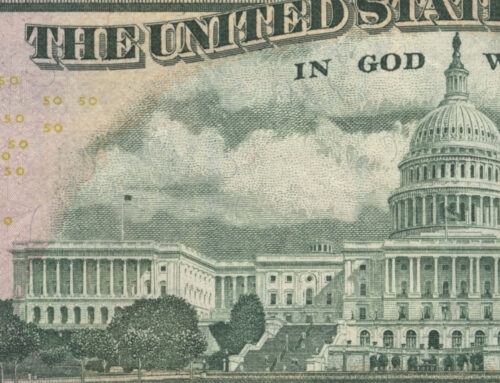
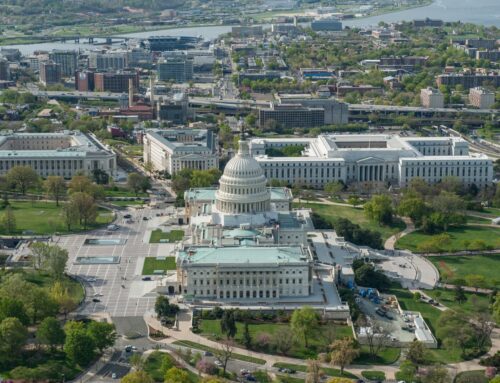







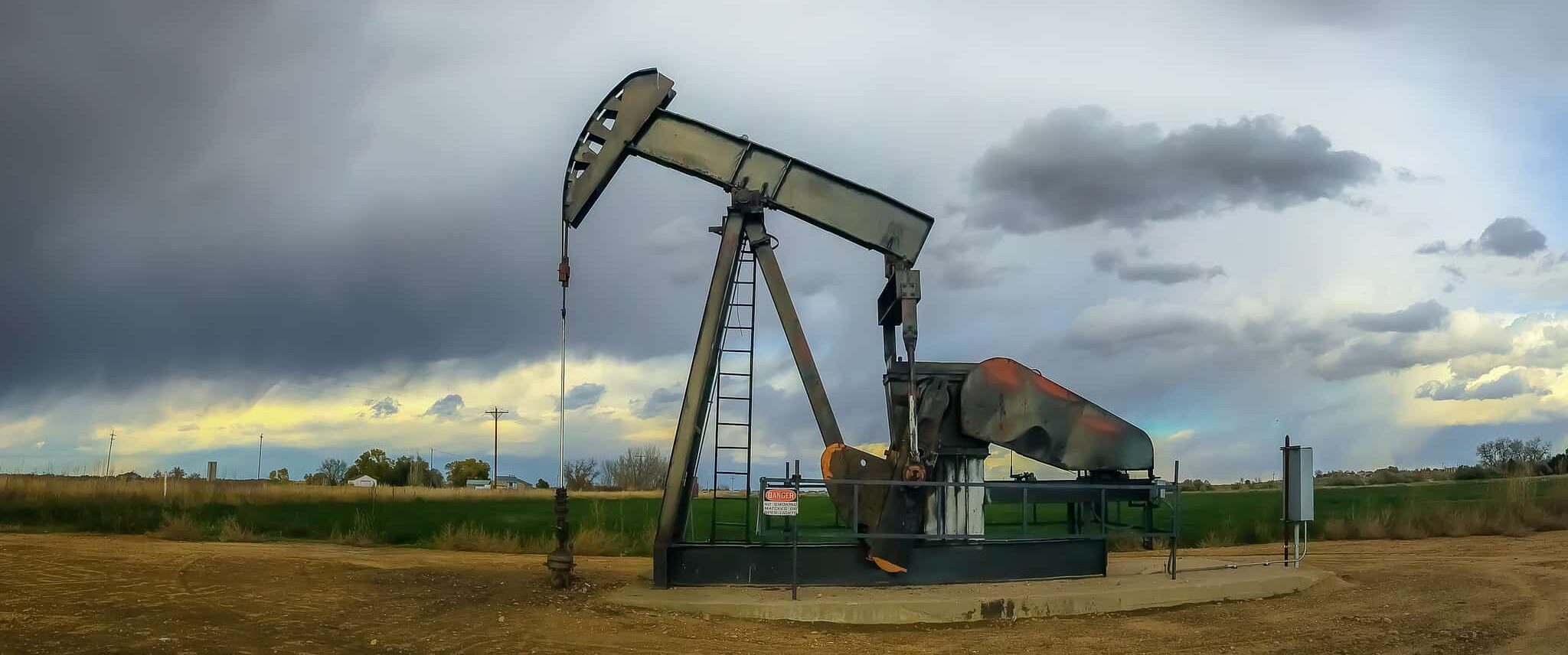

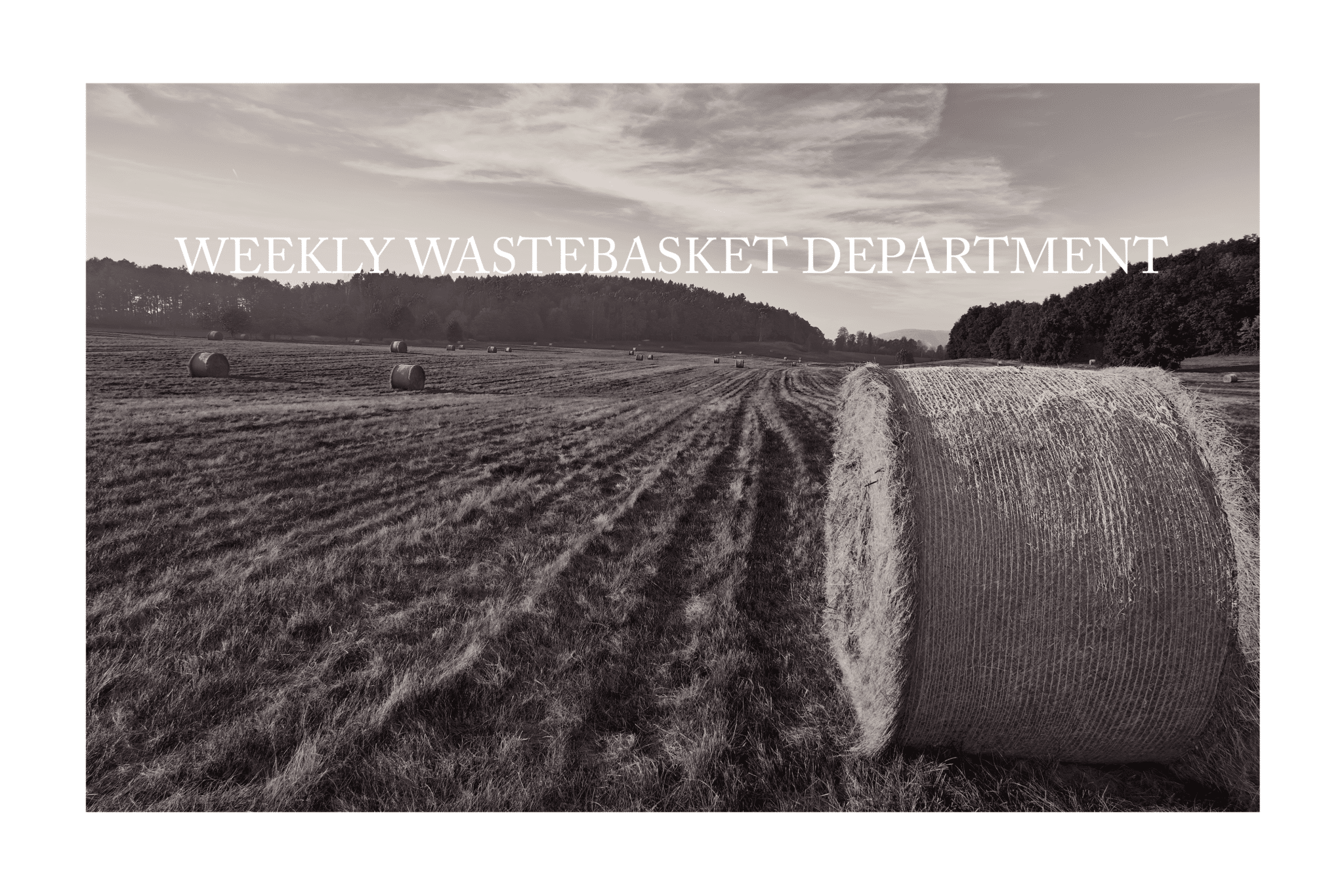
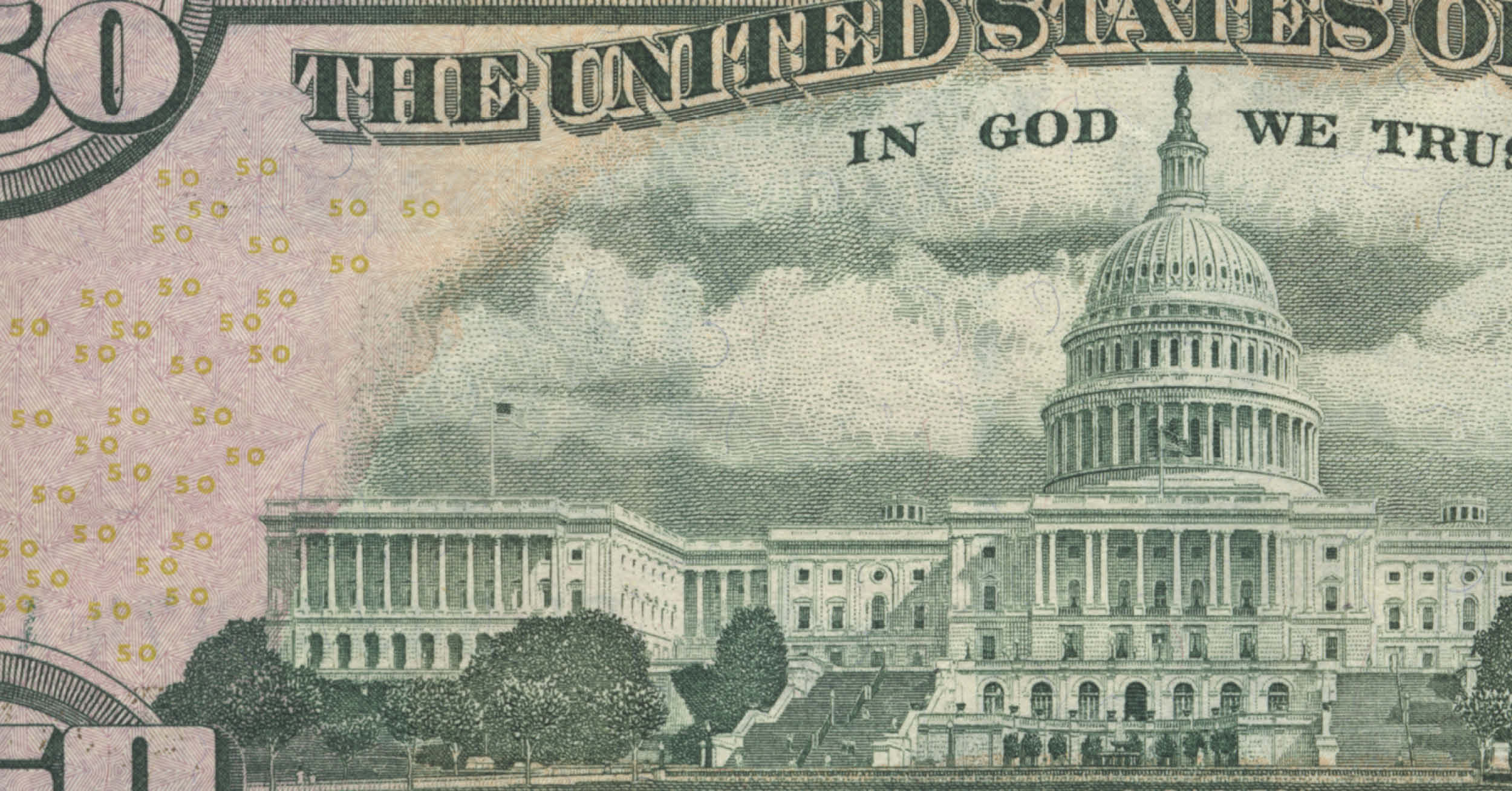
Get Social